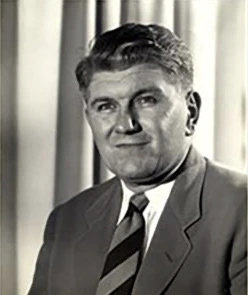We think of our island as the epitome of tranquility and safety. In fact, that’s why many folks have moved here. But the Isle of Palms was once the site of a heinous crime; a case that will go down in history not only for its vile nature, but also because of the legendary figures involved.

The story begins on Sullivan’s Island the night after Christmas on Dec. 26, 1928. Fort Moultrie was still an active military base, and it was the Prohibition Era. Yet that didn’t mean liquor wasn’t widely available. Moonshine and home brew were everywhere. And on the night in question, soldiers from the fort were looking for a little fun – and who wouldn’t be at that time of year? Since the island’s residents were very accommodating to soldiers, it wasn’t hard to find a party. On this evening though, things went sideways.
At the holiday festivities held at the home of a civilian, two soldiers were in attendance — Pvt. Robert Watson and a seasoned grunt named (early) Fetter. The two men were known to be engaged in the illegal whiskey business. A verbal altercation occurred when Fetter accused Watson of stealing from a stash of booze that they had buried on the Isle of Palms near where the county park is today. Watson denied it, suggesting that they go check on it and lie in wait for the real thief to arrive.
The two men and a third soldier, Cpl. Harold Harvey, borrowed a car from another reveler at the party and drove over to the Isle of Palms. Once there, however, tensions escalated between Fetter and Watson, which resulted in Fetter being shot and killed.

In those days, the island was a jungle with giant dunes bordering the beach. Harvey and Watson pulled Fetter’s body into the thick brush. Harvey returned to the party, but Watson went back to the barracks and began packing his clothes. When another soldier on post asked him what he was doing, Watson replied that Harvey had killed Fetter and that the two were planning an escape. Harvey and Watson were subsequently arrested, and Fetter’s body was located.
The two men were tried together. Thomas Porcher Stoney, an experienced lawyer and Charleston’s mayor at the time, presented the state’s case. Arguing for the defense was a young lawyer named J.C. Long — a legacy figure who would later help to develop the Isle of Palms. Long had begun to earn a reputation for great oratory and strong arguments. His cases packed courtrooms with spectators and this case was no different.
In the end, the murder trial reached a verdict as the 12-man jury decided to acquit Harvey, despite Stoney’s argument that Harvey was the mastermind behind the crime. Watson was convicted of manslaughter with a sentence of 10 years but was released three months later for good behavior — upon the recommendation of Long, who was by then a state senator.
And that’s a true crime story that will forever live on in the annals of Charleston’s history.
By Mary Coy




Leave a Reply